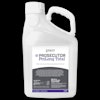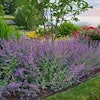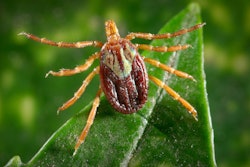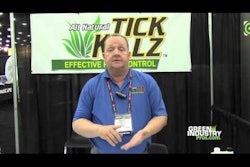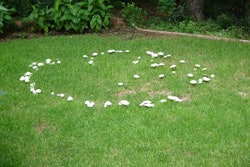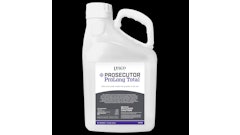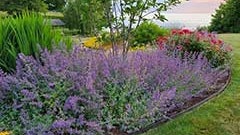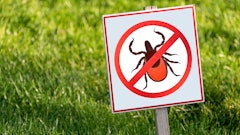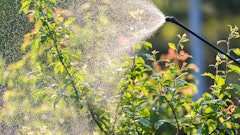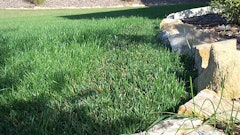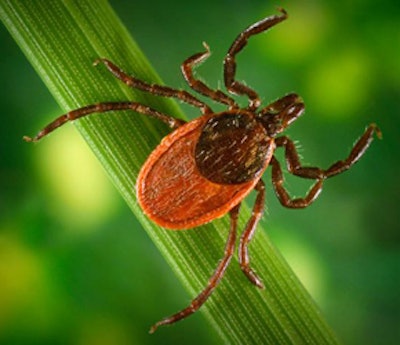
Tick-borne diseases are a growing problem. First of all, there are many of them. In fact, the Centers for Disease Control and Prevention (CDC) lists 14. Many of these diseases are so uncommon that diagnostic tests are not yet readily available. Even the most common disease, Lyme disease, can be tricky to diagnose.
“Furthermore, there is very little in the way of ‘cures’ for many of these diseases,” says Trent Frazer, director of entomology for Alterra, a leading pest management company with more than 22 branches across 18 states from California to Georgia to New Jersey.
Why late-summer is prime tick season
Ticks can present problems all year long, but are especially troublesome this time of year. “Late-summer is when landscapes typically have the most overgrowth,” Frazer reminds. “Since ticks love the overgrowth of trees and bushes, this is when humans and domesticated animals are most prone to having contact with ticks. So it’s important for people to remain alert for tick-borne illness.”
Symptoms of tick-borne illness
According to the CDC, symptoms of tick-borne illness often include fever/chills, aches and pains, and distinctive rashes. Symptoms and treatment will often vary based on your geographic location, and in turn, the type of tick-borne illness you may have contracted.
Protection and prevention
Frazer says it’s important for landscape companies to play a pivotal role in helping protect both their workers and customers (property owners) from tick bites. He offers several tips.
Stay alert. “In areas where you’re likely to find ticks, you really just need to apply some common sense and put a lot of proactivity into it,” Frazer points out. “The most common reason why a person ends up with a tick-borne illness is because they’re around it so much they tend to forget to take preventive care, getting a little bit loose as far as wearing the proper protective equipment, and so on.”
Clothing. Landscaping workers should always wear long pants and long-sleeved shirts. Proper work boots are also important. Preferably, then, those long pants should be tucked into those boots.
Inspections. Conduct personal inspections for ticks throughout the day, or at least at the end of each day. Check yourself over, and ideally, check your crewmates over (and vice versa).
Avoid danger zones. “If at all possible, try to stay out of bushes and avoid entering into dense tree growth,” Frazer advises. “Ticks hang out on leaves and bushes, waiting for an animal or person to pass by so they can latch on. So if you absolutely have to be passing through dense-growth areas, you have to be extra, extra careful.”
Integrated Pest Management (IPM) Approach
Pest management companies, such as Alterra, must have well-trained service technicians who understand where ticks frequent. The technicians must also understand the multiple treatment methods that are available to help them prevent a tick infestation.
“I’m sure you’ve heard the term ‘Integrated Pest Management’ before,” Frazer says. “In this case, IPM means the technician should be using all possible forms of pest control that are specifically focused on tick prevention. This includes establishing adequate pesticide barriers, utilizing proper exclusion methods, and making professional recommendations to the homeowner when the technician comes upon conditions that are conducive to tick infestation.”
Site conditions. “This starts with an initial inspection of the property because every property is different,” Frazer points out. “Again, ticks are going to be found on overgrowth: bushes, trees, tall plants, and thick grass and weeds. In those areas of a property where people and pets most frequent, everything needs to be trimmed back, including the grass. If you want to keep ticks from crawling on you, you need to keep that property inhospitable for tick development.”
Pesticide application. Once you identify those parts of the property that are most conducive to tick infestation, you want to select a suitable chemical for the treatment of ticks that is also least impactful on the environment.
“You’ll usually do a barrier treatment around the home’s foundation, and spot-treat various other cracks/crevices and areas on the property based on your site inspection; areas of high plant growth and/or collection of organic debris,” Frazer explains.
Recommended products, as used by Alterra, include:
- CyKick, a microencapsulated pyrethroid-based product with the active ingredient Cyfluthrin – Alterra’s primary spray product used to establish repellant barriers in and around a home; can also be used as a broadcast spray product
- Bifenthrin, a pyrethroid-based product with Bifenthrin as the active ingredient – Alterra’s primary granular product used to establish granular repellant barriers around a home; can also be broadcasted to cover an entire yard or property if necessary
- Essentria D, a botanical product based on 2-Phenethyl Propionate (found in peanuts), Soybean Oil and Clove Oil – Alterra’s primary dust product used to treat cracks and crevices where ticks might be resting
- Ultracide, a pyrethrin and pyriproxyfen-based product used indoors to treat carpet and other areas where ticks might be found; this is an Insect Growth Regulator that eliminates ticks by eliminating their ability to reproduce, but is also an adulticide, meaning that it also kills adult ticks
“There are also tick-repellant products you can use,” Frazer says. “Tick-repellant products containing permethrin sprayed on clothing will kill a tick on contact. Insect repellents with the active ingredient picaridin, IR3535, DEET or oil of lemon eucalyptus will also repel ticks.”
Exclusion methods. This relates to the removal of organic debris, overgrowth, etc. “In essence, you are ‘excluding’ the reasons a tick might be present,” Frazer says.
If you’re a pest management company that does not provide landscape maintenance services such as mowing or tree trimming, it’s important to educate the property owner, or that property owner’s landscape maintenance provider, on what needs to be done to make the landscape more inhospitable to tick infestation.
A few more quick tick tips for property owners
Wear proper clothing when out and about the property, which could include lighter-colored materials so ticks are more easily identified.
Frequently inspect pets and remove ticks immediately when noticed.
Properly fence in the property to keep wildlife out.
Education and awareness are the keys
When it comes to ticks and tick-borne illnesses, education and awareness really are the keys. Property owners must understand the seriousness of this issue, as must service providers such as landscape contractors. Everyone must also know how to protect themselves from ticks, and how to create and manage landscapes that are less susceptible to tick infestations.
“With more than 20,000 confirmed cases of Lyme disease reported every year and a re-emergence of the tick-transmitted Powassan virus, which can be fatal, it’s more important than ever to be cautious,” Frazer says.
Additionally, it’s important for property owners to be proactive and alert their pest management providers to any issues or concerns. “Pest management companies don’t have this magic wand to wave over a property,” Frazer says. “If a property owner sees a potential problem, such as a tick on their dog, they should alert their service provider. Ticks are especially proficient at learning how to survive—despite attempts to eliminate them. So if and when a pest problem arises, communication is so very important.
“When these types of ‘re-service’ situations arise, Alterra sends a technician out, free of charge, to inspect the property and spot treat as necessary,” Frazer adds.
